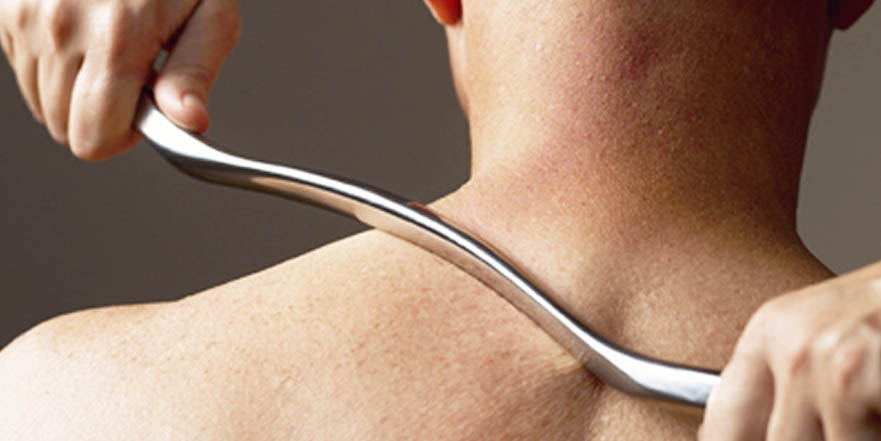Graston Technique is a form of manual therapy that has become increasingly popular recently, especially among athletes and individuals with chronic pain. However, the technique has faced controversies and misconceptions in the field, particularly regarding its ethics and effectiveness. As a Graston Technique certified practitioner or someone considering Graston Muscle Therapy, it’s important to understand the ethical considerations surrounding this technique to provide the best care possible to your clients. This blog will address some common controversies and misconceptions surrounding the Graston Technique and highlight its potential benefits when used ethically and appropriately.
What is Graston Technique?
Graston Technique is a patented instrument-assisted soft tissue mobilization (IASTM) developed in the early 1990s. It uses six stainless steel instruments of various shapes and sizes to detect and treat adhesions and scar tissue in soft tissue. Practitioners use the instruments to apply pressure to the affected area, which breaks up the adhesions and promotes healing. The technique is often used with other therapies, such as chiropractic care and physical therapy.
Graston Technique Certified Practitioners
Graston Technique is a highly specialized therapy that requires extensive training to perform effectively. To become a certified practitioner, one must complete a rigorous training program that includes classroom instruction, hands-on training, and a final exam. Practitioners must also adhere to a strict code of ethics and undergo regular re-certification to maintain their certification.
Controversies Surrounding Graston Technique
Despite its popularity, Graston Technique has been met with controversy and misconceptions. One of the main controversies surrounding the technique is the claim that it can break up scar tissue. While Graston Technique can help reduce scar tissue’s appearance, it is not a cure for scar tissue. Scar tissue is a natural part of the healing process and cannot be completely eliminated.
Another controversy surrounding Graston Technique is the claim that it can increase blood flow to the affected area. While Graston Technique can help to improve circulation in the affected area, it is not a substitute for traditional cardiovascular exercise. Patients should still engage in regular exercise to maintain cardiovascular health.
Misconceptions About Graston Technique
There are also several misconceptions about Graston Technique in the field. One of the most common misconceptions is that the technique is painful. While the pressure applied during the technique can be uncomfortable, it should not be painful. If a patient experiences pain during the technique, the practitioner should adjust their technique or stop the treatment.
Another common misconception about Graston Technique is that it only treats injuries effectively. While Graston Technique is often used to treat injuries, it can also be used to promote overall wellness and prevent injuries. By breaking up adhesions and scar tissue, Graston Technique can improve mobility and range of motion, which can help to prevent injuries.
The Ethics of the Graston Technique
The controversies and misconceptions surrounding Graston Technique raise ethical questions about using the technique in the field. One of the main ethical concerns is the issue of informed consent. Patients should be fully informed about the risks and benefits of the technique before undergoing treatment. Practitioners should also be transparent about their training and certification to ensure patients receive safe and effective care.
Another ethical concern is the issue of the scope of practice. Graston Technique should be used with other therapies, such as chiropractic care and physical therapy. Practitioners should not use Graston Technique as a substitute for other forms of therapy or exceed their scope of practice.
Benefits of the Graston Technique
Graston Technique can benefit patients with musculoskeletal injuries, chronic pain, and scar tissue. Some of the main benefits of the Graston Technique include:
- Improved range of motion and flexibility
- Reduced pain and inflammation
- Accelerated healing and recovery
- Improved circulation and lymphatic drainage
- Reduced muscle tension and spasms
Research has also shown that Graston Technique can effectively treat conditions such as plantar fasciitis, tennis elbow, and carpal tunnel syndrome. However, more research is needed to determine the long-term effectiveness of the Graston Technique for these conditions.
Conclusion
The Graston Technique is a powerful form of manual therapy that can provide numerous benefits when used ethically and appropriately. As a Graston Technique certified practitioner or someone considering Graston Muscle Therapy, it’s important to be aware of the ethical considerations and controversies surrounding this technique to provide the best care possible to your clients. By using the technique with care, adhering to ethical guidelines, and recognizing its limitations, Graston Technique can be a valuable tool in addressing pain and promoting healing in individuals with various conditions. Look for reputable training programs and practitioners prioritizing ethical guidelines and patient safety.

